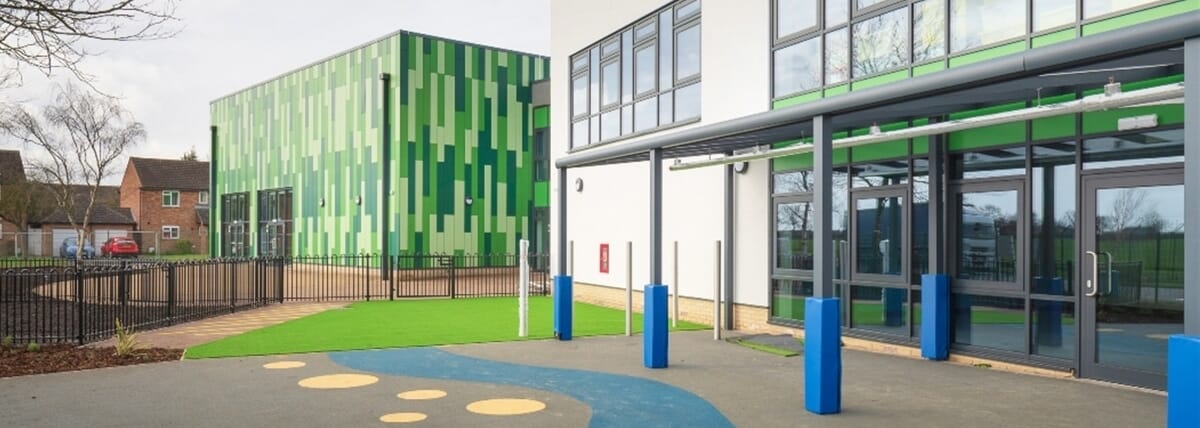Exploring the BREEAM certification process
We explore everything there is to know about the BREEAM certification process, so you can obtain your desired BREEAM rating with ease.

BREEAM certification plays a critical role in creating a greener and more sustainable built environment. As the UK’s most widely recognised sustainable building assessment method, BREEAM helps developers, architects, and project managers drive their projects towards environmental excellence. But achieving a BREEAM rating is much more than just the certification itself – it is a team effort that demonstrates the professionalism and resilience needed to achieve net zero by 2050.
We explore everything there is to know about the BREEAM building certification process below, so you can obtain your desired BREEAM rating with ease.

What is BREEAM certification?
BREEAM (Building Research Establishment Environmental Assessment Method) is the world’s longest-established method for assessing, rating, and certifying the sustainability of buildings. Developed by the Building Research Establishment (BRE) back in 1990, it evaluates projects based on several key categories:
- Management (Man)
- Pollution (Pol)
- Land use and ecology (LE)
- Energy (Ene)
- Water consumption (Wat)
- Materials (Mat)
- Waste (Wst)
- Transport (Tra)
- Health and wellbeing (Hea)
BREEAM provides a clear framework that enables developers, architects, and building managers to create more sustainable, resource-efficient buildings that meet the latest environmental regulations. You can read more about the benefits of BREEAM in our dedicated blog post.
How does BREEAM certification work?
The BREEAM assessment and certification process must be carried out by a licensed BREEAM assessor. It involves a detailed evaluation of a building at different stages of its life cycle, from the initial planning and design phases through to construction and occupation.
Each category within BREEAM has specific targets and benchmarks, and assessors award credits based on the project’s performance against these benchmarks. The total credits earned are then multiplied by an environmental weighting factor to generate a final score.
Buildings are rated using the following scores:
- Unclassified – Less than 30%
- Pass – 30% or higher
- Good – 45% or higher
- Very good – 55% or higher
- Excellent – 70% or higher
- Outstanding – 85% or higher (achieved by only a small percentage of projects in the UK)
A step-by-step guide to obtaining BREEAM certification
Developers must follow a structured process in order to achieve BREEAM certification. This includes:
1) Identifying the appropriate BREEAM standard
Begin by identifying the BREEAM standard that is most applicable to your development project. BREEAM has several variations that address different project types, including:
- BREEAM New Construction – For all new non-residential developments in the UK.
- BREEAM New Construction: Residential (previously Home Quality Mark) – For all new residential developments in the UK.
- BREEAM Refurbishment & Fit-Out – For all renovation projects in the UK.
- BREEAM In-Use – For existing UK buildings that need to improve their sustainability.
- BREEAM International – For all new developments outside the UK.
- BREEAM Bespoke – For UK buildings that do not fit within existing BREEAM categories.
2) Appointing a BREEAM assessor
The next step is appointing a licensed BREEAM assessor. They will guide you through the process and ensure that your project seamlessly aligns with the criteria for certification. At Encon Associates, our in-house BREEAM assessors and BREEAM APs (Accredited Professionals) have over 18 years’ experience in conducting a comprehensive range of BREEAM assessments – and we are exceptionally proud to have never missed a targeted rating.
3) Registering your project
Once you’ve appointed a BREEAM assessor, they will register your project with the BRE. Fees will vary depending on which BREEAM standard you are applying for, and the size and scope of your project. Discover which factors affect BREEAM certification costs in our blog post.
4) Pre-assessment stage
A BREEAM pre-assessment is the first official stage in the BREEAM assessment process. This preliminary evaluation assesses areas such as energy efficiency, water usage, and material selection, providing a clear forecast for how your building may score in the full BREEAM assessment. This allows you to make any design changes or implement other additional measures that may be required to achieve your desired BREEAM rating.
5) Formal assessment stages
After your project has completed its initial BREEAM pre-assessment, it then moves to the formal design and post-construction stages of assessment. The design stage assessment takes place during the planning and early design phases, and the post-construction stage assessment is conducted upon project completion.
6) Submitting your evidence
Once the pre-assessment and formal assessment stages have been completed, the BREEAM assessor will review all supporting documentation and submit it to the BRE on your behalf. The BRE will then award you with your final BREEAM score.
If you’re hoping to achieve an outstanding BREEAM rating, read our guide for helpful tips and advice on maximising your score.
Achieve your desired BREEAM rating with Encon Associates
Obtaining BREEAM certification can significantly enhance your project’s sustainability credentials and market appeal. Our licensed BREEAM assessors are here to support you throughout every stage of your BREEAM journey, from the initial pre-assessment through to the final certification. We will conduct BREEAM assessments of your building(s), write reports for submission to the BRE, and apply for certification on your behalf. By partnering with us, you stand the best possible chance of achieving your targeted BREEAM rating.
Contact one of our BREEAM assessors today and get ready to take the first steps on your BREEAM building certification journey.